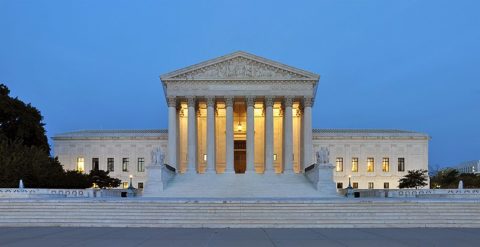Atun-Shei Films
Published 9 Nov 2020Colonel Joshua Lawrence Chamberlain’s postbattle interview following the 20th Maine’s successful defense of Little Round Top at the extreme left of the Union line during the Battle of Gettysburg in the 1863 Civil War season.
Support Atun-Shei Films on Patreon ► https://www.patreon.com/atunsheifilms
Leave a Tip via Paypal ► https://www.paypal.me/atunsheifilms
Buy Merch ► https://teespring.com/stores/atun-she…
#Gettysburg #UnionArmy #CivilWar
Reddit ► https://www.reddit.com/r/atunsheifilms
Twitter ► https://twitter.com/atun_shei~SOURCES~
“Joshua Lawrence Chamberlain’s Report on the 20th Maine at Gettysburg” (2020). IronBrigader https://ironbrigader.com/2020/06/29/j…
William B. Styple. Generals in Bronze: Interviewing the Commanders of the Civil War (2005). Belle Grove Publishing, Page 222-227
November 10, 2020
Colonel Joshua L. Chamberlain on Clutch Little Round Top Win | Potomac-N.Virginia Postbattle
The amazing mental gymnastics that lead to the US Supreme Court’s unanimous decision in Wickard v. Filburn in 1942
Antony Davies and James R. Harrigan explain how a farmer growing wheat on his own land to feed his own cattle somehow transmogrified into an interstate commerce activity that could be regulated by the federal government:

Panorama of the west facade of United States Supreme Court Building at dusk in Washington, D.C., 10 October, 2011.
Photo by Joe Ravi via Wikimedia Commons.
… who ended up being tasked with deciding what Article One, Section Eight actually meant? Herein lies the wrinkle that enables all manner of constitutional mischief in the United States. The institution that ended up deciding what the federal government is empowered to do is itself a branch of the federal government. And it should come as no surprise that when push comes to shove, the Supreme Court routinely finds in favor of empowering the federal government.
This sort of mischief flowered fully in the decade following ratification of the 21st Amendment. In 1942, the Supreme Court decided a case, Wickard v. Filburn, in which farmer Roscoe Filburn ran afoul of a federal law that limited how much wheat he was allowed to grow.
A careful reader might, and should, ask where the federal government’s right to legislate the wheat market is to be found — because the word “wheat” is nowhere to be found in the Constitution. Be that as it may, the federal government’s aim was clear enough. It was to keep the price of wheat high enough for farmers to remain profitable. The Agricultural Adjustment Act of 1938 put an upper limit on how much wheat farmers were allowed to grow, which would serve to keep prices high by limiting supply.
Roscoe Filburn had grown 12 more acres of wheat than the law allowed. But not only did he not sell the excess wheat outside of his home state, but he also didn’t sell it at all. He used the wheat from those 12 acres to feed his cattle. Filburn was very clearly not engaging in commerce, let alone interstate commerce, yet the Supreme Court found (unanimously) that because Congress had the authority to regulate interstate commerce, Congress also had the authority to prohibit Filburn from growing those 12 acres of wheat for his own use. The Supreme Court’s “reasoning”?
Had Filburn not fed his cattle that excess wheat, he would have been forced to purchase wheat on the open market. And even if he purchased wheat that was grown within his home state, doing so would have made less wheat available within his home state for other wheat buyers. Consequently, some wheat buyers within his home state would then have had to buy wheat from outside the state. Therefore, Filburn’s non-commercial activity was, according to the Supreme Court, interstate commerce.
The mental gymnastics that went into this ruling made just about any activity interstate commerce by definition. Since Wickard, any time Congress has wanted to exercise power not authorized by the Constitution, lawmakers have simply had to make an argument that links whatever they want to accomplish to interstate commerce. Why? Because they know they can get away with it.
WWI Pritchard Bayonet for the Webley Revolver
Forgotten Weapons
Published 23 Nov 2016Cool Forgotten Weapons Merch! http://shop.bbtv.com/collections/forg…
The Pritchard bayonet for the Webley revolver is one of the more photogenic and less truly practical weapons to come out of the Great War. Designed by one Captain Pritchard after he spent a year in France in 1915-1916 with the Royal Berkshire Regiment, the idea was to use the front 8 inches or so of a sword on a cast gunmetal hilt to create a bayonet mounted on a British service revolver. He first presented the idea to the Wilkinson Sword Company, but they were too busy making sabers and rifle bayonets, and suggested that having to sacrifice usable sword blades for production would make it quite the expensive endeavor.
Pritchard next took his idea to W.W. Greener, where he found a more receptive audience. Greener had a large supply of surplus French Gras bayonets, which were cheap and served as excellent donors for the Pritchard bayonets. Something like 200 were made in total — not formally adopted by the British but available for commercial sale to officers who might want them. While some may have seen service, no hard evidence has been found to prove any combat action with them.
Over the decades, a great many fake and reproduction Pritchard bayonets have been made — many times more than there are originals. As far as I can determine, this one is a legitimate original (although it may have a replacement locking lever). A few things to look for in authenticating a Pritchard are engraved patent and manufacturer marks (most reproductions have no manufacturer logo and a stamped patent number) and a quality casting. When you hold the blade and tap the handle with a hard object, it should ring bright and bell-like (which this one does).
QotD: The Smartphone, the Eater-of-Gadgets
I’ve been thinking for some time now that the smartphone has achieved a kind of singularity, becoming a black hole that sucks all portable electronics into itself. PDAs – absorbed. Music players – consumed. Handset GPSes – eaten. Travel-alarm clocks, not to mention ordinary watches – subsumed. Calculators – history. E-readers under serious pressure, and surviving only because e-paper displays have lower battery drain and are a bit larger. Compasses – munched. Pocket flashlights – crunched. Fobs for keyless locks – being scarfed down as we speak, though not gone yet.
[…]
But in an entertaining inversion, one device of the future actually works on smartphones now. Because I thought it would be funny, I searched for “tricorder” in the Android market. For those of you who have been living in a hole since 1965, a tricorder is a fictional gadget from the Star Trek universe, an all-purpose sensor package carried by planetary survey parties. I expected a geek joke, a fancy mock-up with mildly impressive visuals and no actual function. I was utterly gobsmacked to discover instead that I had an arguably real tricorder in my hand.
Consider. My Nexus One includes a GPS, an accelerometer, a microphone, and a magnetometer. That is, sensors for location, magnetic field, gravitational fields, and acoustic energy. Hook a bit of visualization and spectral analysis to these sensors, and bugger me with a chainsaw if you don’t have a tricorder. A quad- or quintcorder, actually.
And these sensors are already completely stock on smartphones because sensor electronics is like any other kind; amortized over a large enough production run, their incremental cost approaches epsilon because most of their content is actually design information (cue the shade of Bucky Fuller talking about ephemeralization). Which in turn points at the fundamental reason the smartphone is Eater-of-Gadgets; because, as the tricorder app deftly illustrates, the sum of a computer and a bunch of sensors costing epsilon is so synergistically powerful that it can emulate not just real single-purpose gadgets but gadgets that previously existed only as science fiction!
[…]
I specified “personal” radios because radios have something in common with personal computers; their main design constraints are actually constraints on a peripheral stage. For a computer you’ll be using for hours at a time you really want a full-sized hard keyboard and a display bigger than a smartphone’s; for a really good radio, the kind you supply sound for a party with, you need speakers with resonant cavities that won’t fit in a smartphone enclosure.
Digital cameras are another diagnostic case. The low-end camera with small lenses is already looking like a goner; the survivors will be DSLRs and more generally those with precision optics too large and too expensive to fit in a phone case.
These two examples suggest Raymond’s Rule of Smartphone Subsumption: if neither the physics nor the ergonomics of a gadget’s function require peripherals larger than will fit in a smartphone case, the smartphone will eat it!
Eric S. Raymond, “Smartphone, the Eater-of-Gadgets”, Armed and Dangerous, 2010-07-16.





